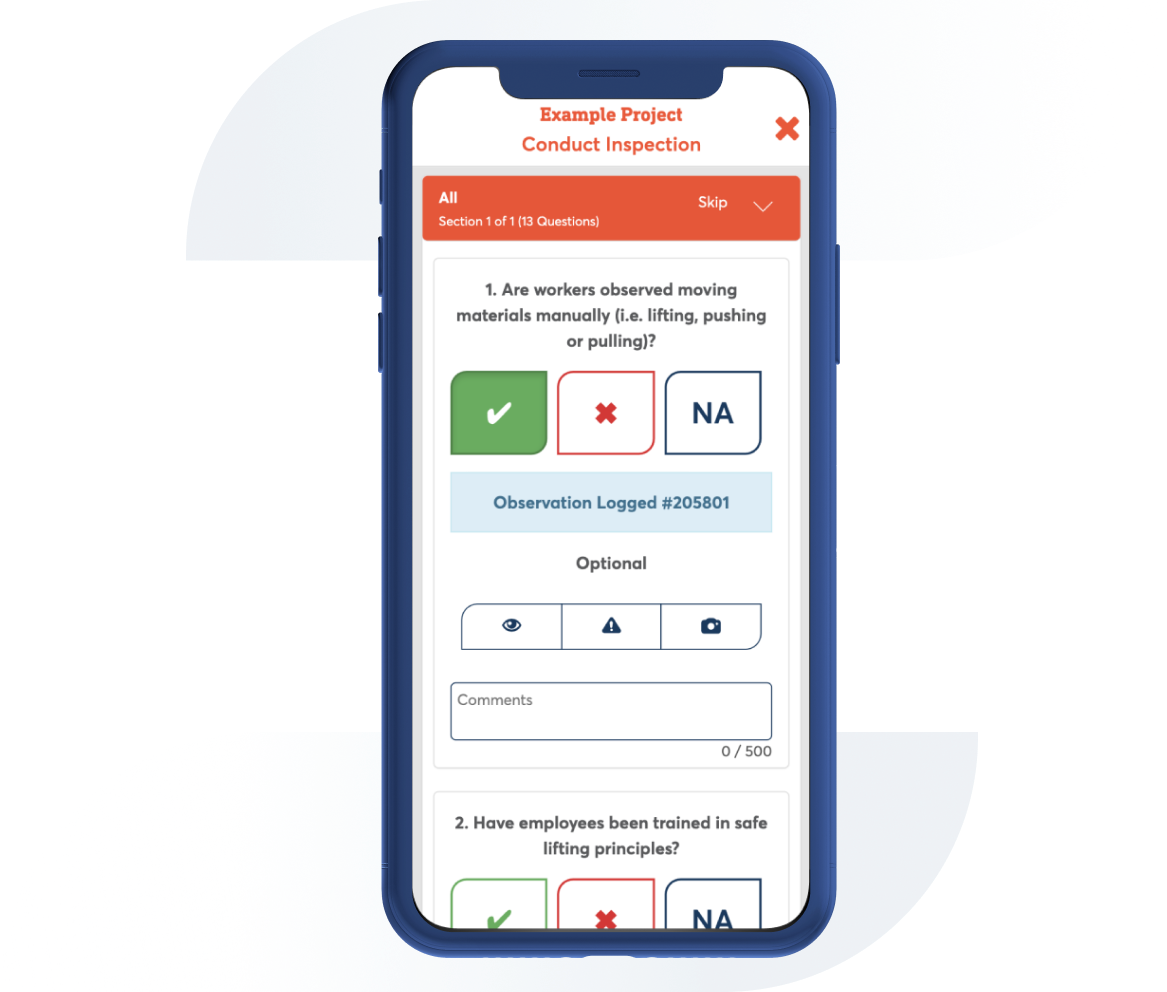Hazard Identification for Mining
Contributor: Safesite Jurisdiction: MSHA
Utilize this checklist to ensure all emergency protocol is established, all equipment has been properly tested, stored and/or surveyed pre-shift. Proper respiratory equipment/sanitary restroom facilities have been provided to all employees.

Template Preview
1. Are test results and records for electrical continuity and resistance of grounding systems available?
Actions
2. Are employees trained in emergency First Aid/CPR and AED present and available on all shifts?
Actions
3. Are emergency telephone numbers posted at appropriate telephones?
Actions
4. Is an emergency communication system installed and operable throughout the mine to obtain assistance in the event of an emergency?
Actions
5. Are records of portable fire extinguisher monthly inspections, annual checks and periodic hydrostatic testing available and retained for at least one year?
Actions
6. Are pre-shift inspection and certification records available for each piece of self-propelled mobile equipment?
Actions
7. Are pre-shift workplace safety inspections performed by a competent person and records available and retained for at least one year?
Actions
8. Is each container of hazardous chemicals in the workplace labeled, tagged or marked identifying the chemical it contains?
Actions
9. Is each container of Toxic materials that are used in conjunction with mining or discarded from mining or milling operations plainly marked or labeled so as to identify the hazard and preventive action required?
Actions
10. Are test results and inspection records for pressure vessels, air receivers and unfired pressure vessels available and retained for at least one year?
Actions
11. Are test results and records for electrical continuity and resistance of grounding systems available?
Actions
12. Are test results and records for Fire Suppression systems and other fire fighting systems available?
Actions
13. Does the mine have on-site fire fighting equipment or prior arrangements with local fire services?
Actions
14. If present, is the fire fighting equipment of the type, size, and quantity that can extinguish fires of any class which could occur as a result of the hazards present and strategically located, readily accessible, plainly marked, and maintained in fire-ready condition?
Actions
15. Are explosives stored greater than 25 feet from combustibles including grass (except live trees 10 feet or higher)?
Actions
16. Are oxygen cylinders prevented from being stored in rooms or areas used or designated for storage of flammable or combustible liquids including grease?
Actions
17. Are all principle power switches labeled to show which units they control unless obvious by location?
Actions
18. Does the mine operation have a written Control of Hazardous Energy (LOTO) Program?
Actions
19. Is heavy equipment equipped with horns or other audible backup warning devices that are maintained in functional condition?
Actions
20. Are Berms, bumper blocks, safety hooks, or similar impeding devices provided at dumping locations where there is a hazard of vehicle overtravel or overturning?
Actions
21. Are Dust control measures in effect at muck piles, material transfer points, crushers, and on haulage roads where hazards to persons would be created as a result of impaired visibility?
Actions
22. Mobile unattended equipment required to have the controls placed in the park position and the parking brake set?
Actions
23. Is mobile equipment parked on a grade required to have the wheels or tracks either chocked or turned into the bank or rib?
Actions
24. Are haul roads kept free from spilled material that creates hazards to mobile equipment?
Actions
25. Are traffic control rules governing speed, right-of-way, direction of traffic and headlight use in effect and hazards and signs posted?
Actions
26. Are guards, shields, or other devices that provide protection against hazards from flying or falling materials installed in areas near screens, crushers, or conveyors?
Actions
27. Are guards installed around moving machine parts to protect persons from contacting gears, sprockets, chains, drive wheels, shafts, etc.?
Actions
28. Has the organization tested for respiratory hazards to workers from dust or airborne contaminants ?
Actions
29. Does the mine operator provided a suitable respirator to each employee when such equipment is necessary to protect the health of the employee?
Actions
30. Are employees who are designated to work where there is danger of falling provided personal fall protection equipment?
Actions
31. Are employees provided and trained to use appropriate personal protective equipment (I.e. gloves, head protection, safety glasses, hearing protection etc.) necessary for working safely?
Actions
32. Does the mine operator have a noise exposure prevention program, measure noise levels for various operations and test employee hearing in accordance with established Industrial Hygiene practices?
Actions
33. Are clean and sanitary toilet facilities provided at locations that are compatible with the mine operations and that are readily accessible to mine personnel?
Actions
34. Write Comments or Remarks here:

Can't find what you are looking for?
